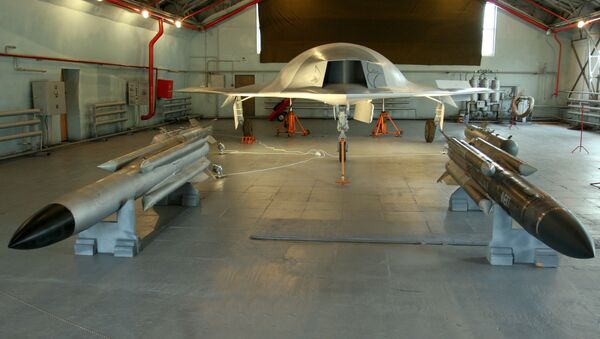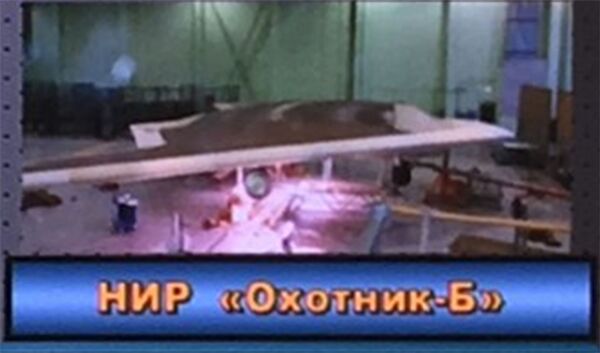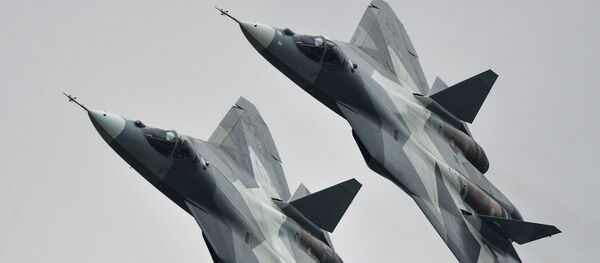With characteristics of the new strike drone yet to be disclosed, it was reported that the 20-ton UAV will be equipped with stealth technologies of the new Russian fifth-generation T-50 PAK FA fighter jet and will be capable of flying as a sixth-generation fighter.
Flight tests of the Okhotnik-B are due to begin already in 2018, and in 2020 it is expected to enter service with the Russian Armed Forces.
Judging by the Okhotnik-B photo, the drone is being developed in line with the "flying wing" scheme stipulating a three-column chassis. In the same way, the Skat drone was created by the Russian aircraft corporation MiG in the 1990s, something that prompted experts to suggest that some Skat technologies may be used in the Okhotnik-B.
According to unconfirmed reports, the range of the Russian heavy drone will stand at about 6,000 kilometers. It means that the UAV may be equipped with the turbojet two-circuit engine AL-31F, which is used in the Russian fighters of the Su-27 family.
US Navy's X-47B is first #drone designed to take off from an aircraft carrier. https://t.co/JEz4auGWZB #military pic.twitter.com/ABXoJlOurh
— TechEBlog (@techeblog) 22 декабря 2015 г.
In an interview with Sputnik, Russian military expert Denis Fedutinov, for his part, suggested that the Okhotnik-B's silhouette may look like that of reconnaissance and strike drones developed by European and US companies.
"Judging by data on the Okhotnik-B's takeoff weight, it is safe to assume that its characteristics will be similar to those of the US drone X-47B developed by Northrop Grumman. It can fly at high subsonic speeds, operating within a radius of up to 4,000 kilometers and carrying a diverse target load, including the strike one which weighs up to 2 tons," Fedutinov said.
"Concerning the UAVs I should only say that there is no point of speaking about some lagging behind. It has been rapidly reduced and will be completely eliminated soon," Rogozin said in an interview.
He specified that he was speaking about both combat and reconnaissance drones.





